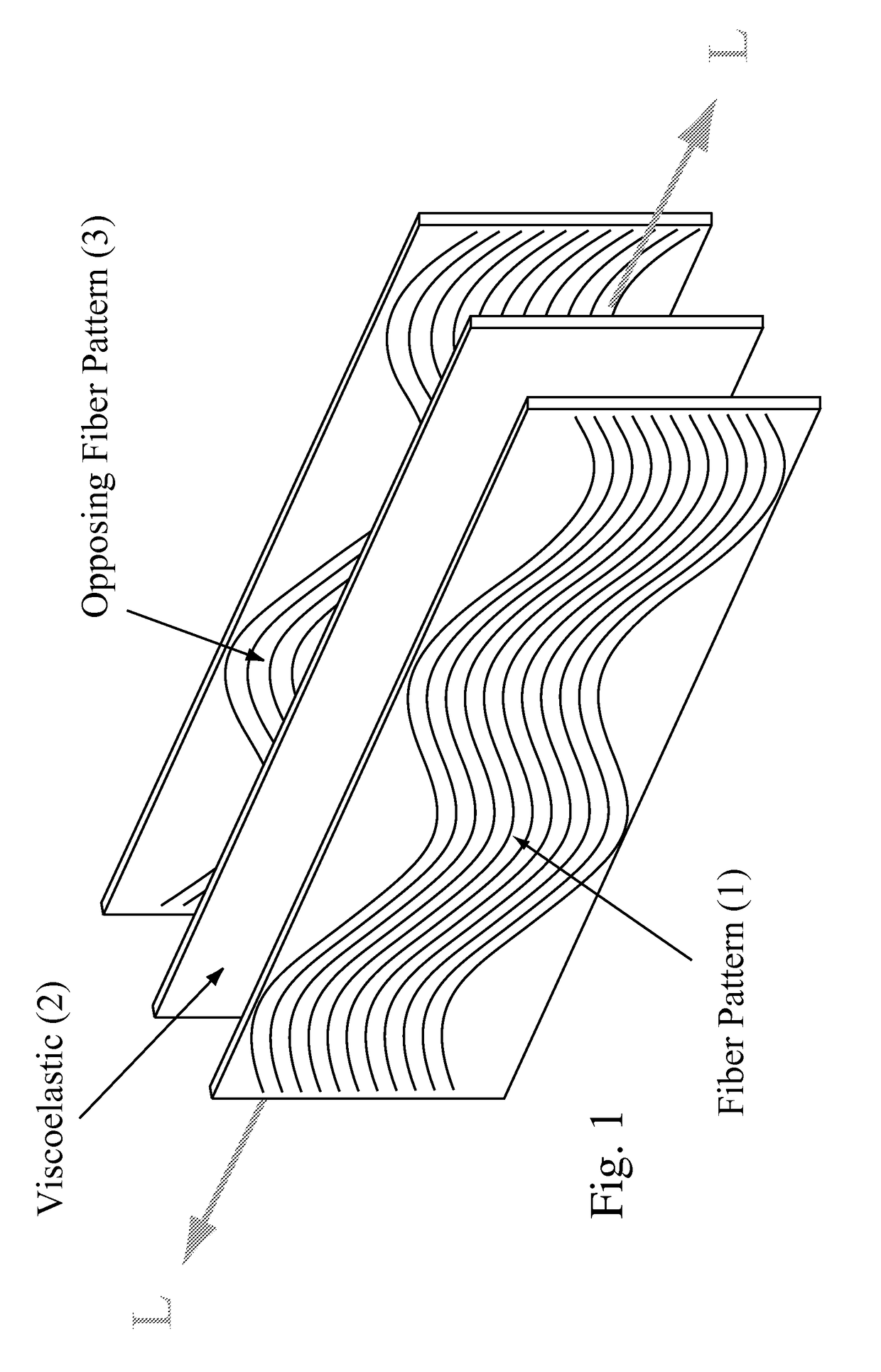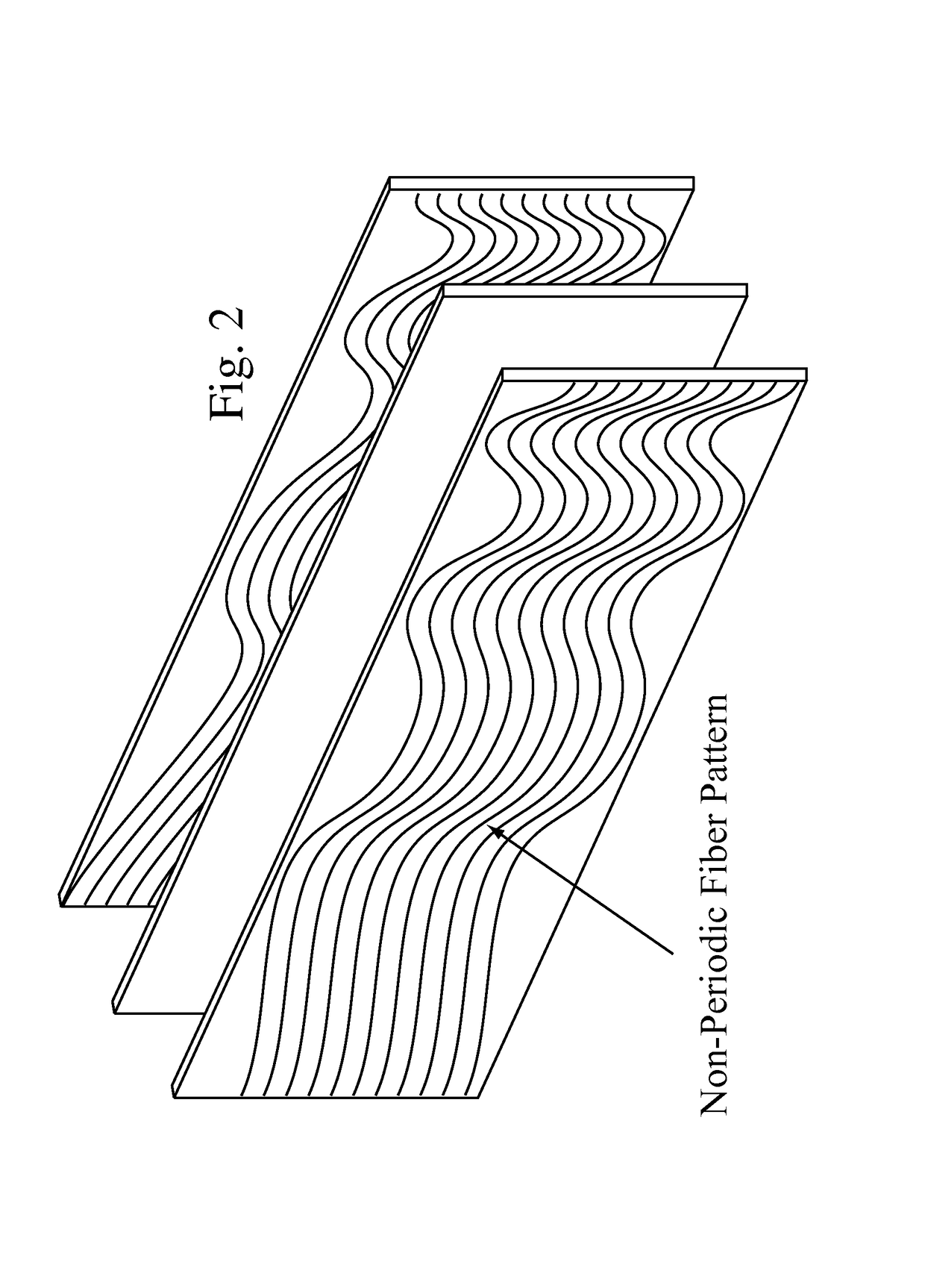Wavy composite structures
a composite material and composite material technology, applied in the direction of flexible pipes, resilient suspensions, solid-based dampers, etc., can solve the problems of affecting the accuracy of antenna aiming, the fatigue failure of structural components can occur at stresses well below static load limits, and the interruption of fibers is minimized. , the effect of reducing the interruption of fibers
- Summary
- Abstract
- Description
- Claims
- Application Information
AI Technical Summary
Benefits of technology
Problems solved by technology
Method used
Image
Examples
Embodiment Construction
[0097]The most basic wavy composite structure is shown in FIG. 1 where a wavy composite layer (1) is combined with a viscoelastic layer (2) and an opposing wavy composite layer (3) with generally the same waveform as the first layer (1) but with a waveform that is offset by half a wavelength. The waveform need not be sinusoidal but may be any waveform that accomplishes the desired stiffness and damping performance. For example the waveform may vary along the length as shown in FIG. 2. In general, the waveform shown in FIG. 1 (1) and FIG. 2 would be described as sinuous. The wavy composite layers (1&3) may be made with bi-directional cloth as well as unidirectional fibers.
[0098]The CWCV shown in FIGS. 3-12 show a fiber pattern that is generally sinusoidal with a constant waveform, period, etc. Since the damping properties are frequency and temperature dependent, and since the selection of an optimal wave shape can be influenced by the desired structural response, a non-periodic, non-...
PUM
| Property | Measurement | Unit |
|---|---|---|
| angle | aaaaa | aaaaa |
| width | aaaaa | aaaaa |
| angle | aaaaa | aaaaa |
Abstract
Description
Claims
Application Information
 Login to View More
Login to View More - R&D
- Intellectual Property
- Life Sciences
- Materials
- Tech Scout
- Unparalleled Data Quality
- Higher Quality Content
- 60% Fewer Hallucinations
Browse by: Latest US Patents, China's latest patents, Technical Efficacy Thesaurus, Application Domain, Technology Topic, Popular Technical Reports.
© 2025 PatSnap. All rights reserved.Legal|Privacy policy|Modern Slavery Act Transparency Statement|Sitemap|About US| Contact US: help@patsnap.com



